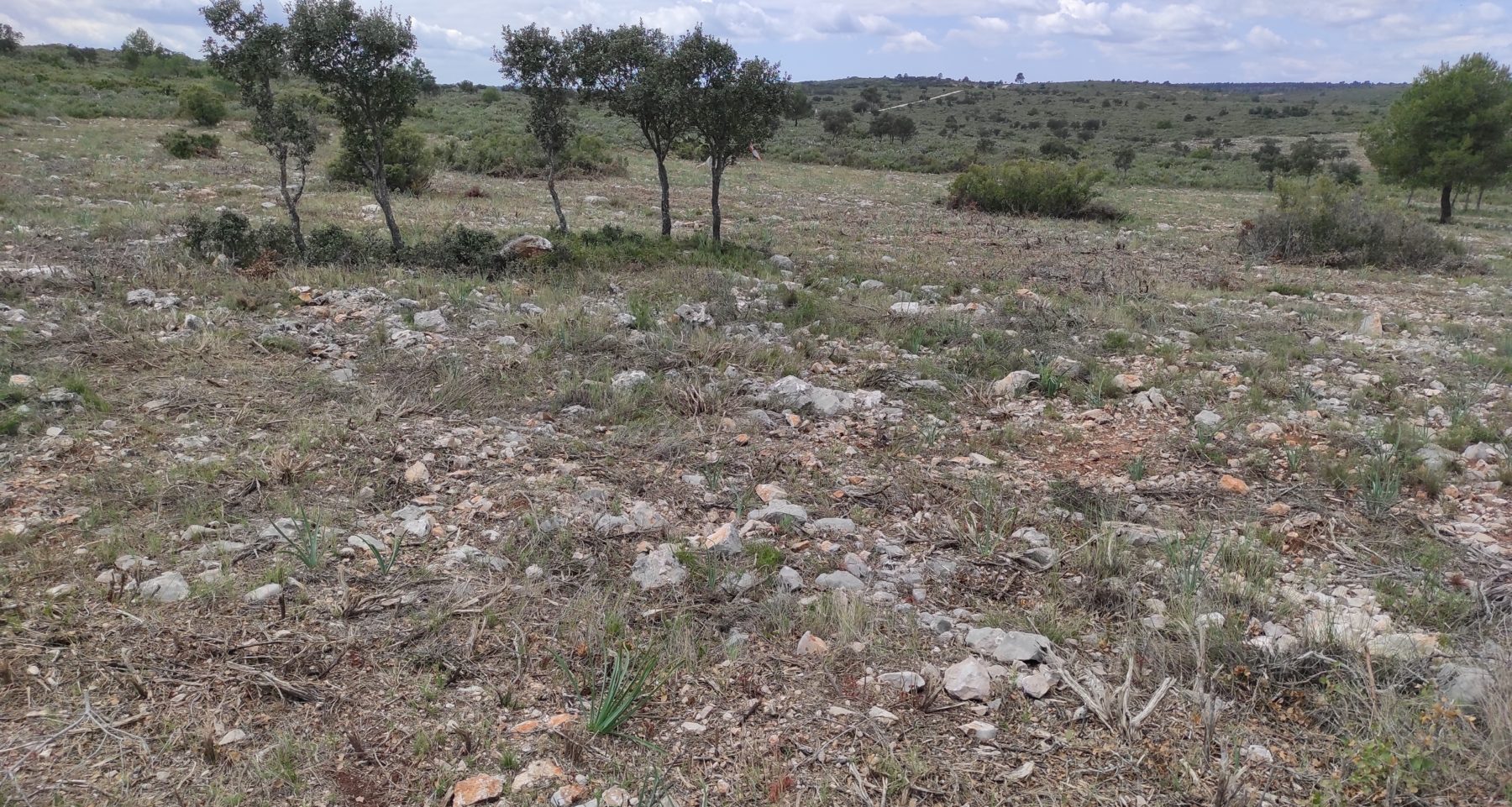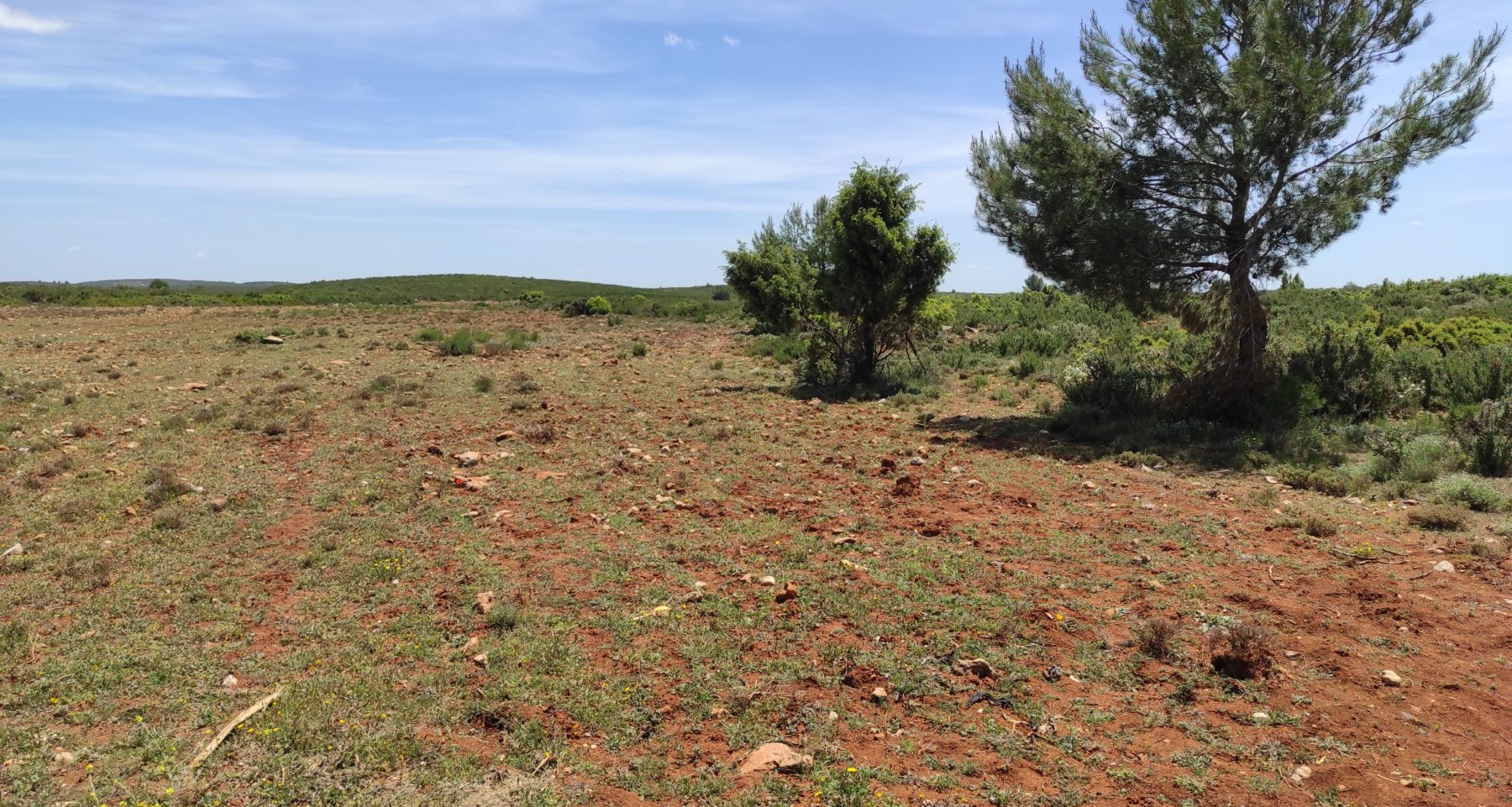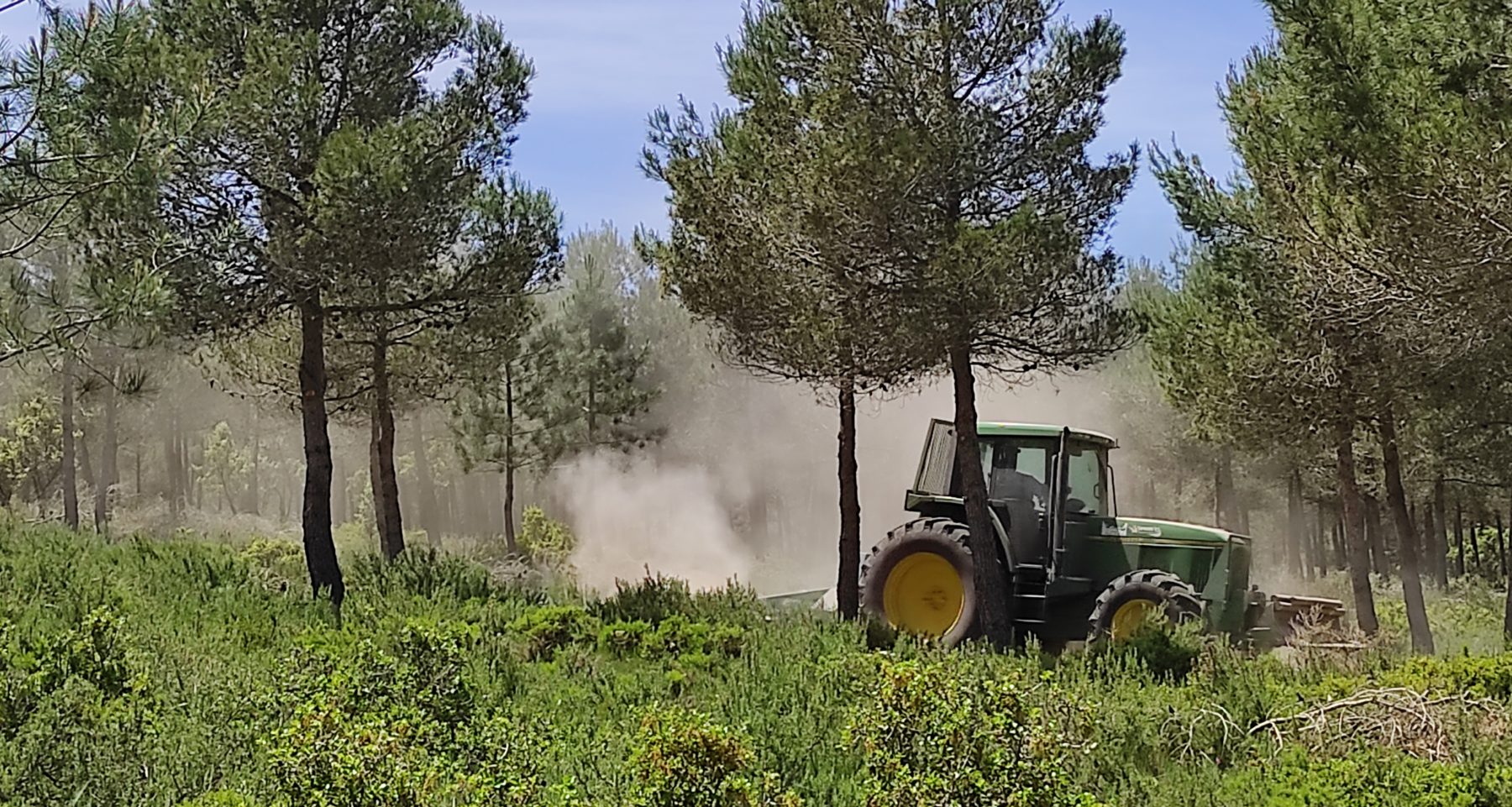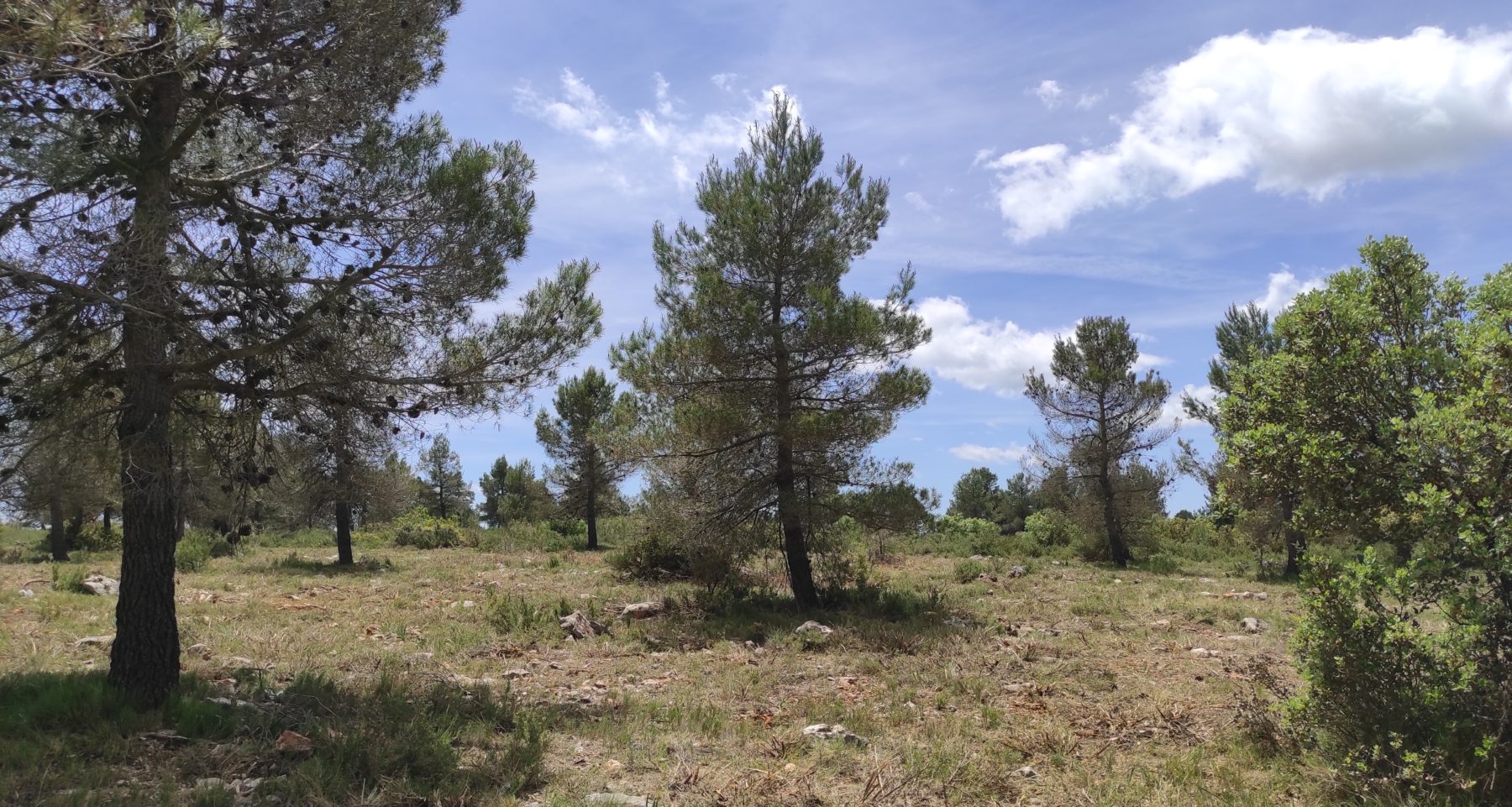Overview
SAC Muela de Cortes y El Caroche is a hotspot of biodiversity and provides a wide range of ecosystem services, as it is one of the most extensive semi-natural areas of the Valencian Community. However, this area has experienced recurrent wildfires in recent decades, including large wildfires. Rural abandonment has also contributed to landscape homogenization, and the dominance of woody communities. This project aims to develop a mosaic landscape with shrub formations, dry grasslands, and grasslands to allow the recovery of ecological interactions, ecosystem functionality and biodiversity, and protect habitats of interest. The wide diversity of actions planned aim to (i) reduce the continuity of vegetation to prevent large fires, increasing forest resistance and resilience to forest fires, (ii) increase ecosystem resistance and resilience to climate change and drought, (iii) increase the surface area of suitable habitat for large wild herbivores, (iv) meet specific objectives in relation to biodiversity, fire prevention, recovery of agricultural uses and hunting. The mosaic will also contribute to soil stabilization, regulate the hydrological cycle, stabilize carbon and nutrients, protect biodiversity, including pollinators, and increase the extent of quality pastures for wild ungulates.
Quick Facts
Project Location:
Zona de Especial Conservación Muela de Cortes, 39.2383643, -0.9329691, 3, ChIJAzXUx4ghYQ0REflSPcQZQNE, Comunidad Valenciana, VC, 46199, Spain, ES
Geographic Region:
Europe
Country or Territory:
Spain
Biome:
Grassland/Savanna
Ecosystem:
Grasslands & Savannas - Temperate
Area being restored:
Actions dispersed over 972 ha covering the SAC.
Project Lead:
Empresa Pública Valenciana de Aprovechamiento de Residuos S.A. (VAERSA). Project design and supervision. TRAGSA. Project implementation.
Organization Type:
Other
Project Partners:
Empresa Pública Valenciana de Aprovechamiento de Residuos S.A. (VAERSA).
TRAGSA (Execution).
Unión Europea – Fondo Europeo de Desarrollo Regional (FEDER).
Fundación Centro de Estudios Ambientales del Mediterráneo (CEAM).
Universidad de Alicante.
Centro de Investigaciones sobre Desertificación (CIDE).
WWF España.
Location
Project Stage:
Monitoring & Evaluation
Start Date:
2020
End Date:
2022
Primary Causes of Degradation
Agriculture & Livestock, Fire & Weather EventsDegradation Description
Agriculture, forestry, and livestock husbandry:
Rural depopulation and abandonment of traditional agricultural uses have caused a loss of the mosaic of habitats characteristic of this territory, and an increase in of forest extent and continuity. Environmental homogenization, together with other factors, such as the increase in temperature and changes in the rainfall patterns in a context of climate change, increase vulnerability to wildfires, and the loss of relevant ecosystem services in the region, such as melliferous potential, habitat for some plant species, especially grassland species, or a deterioration of the quality of the habitat for large mammals fauna (which are hunted; especially ibex and mouflon).
Wildfires:
In the last decades of the 20th century, the severity and recurrence of forest wildfires have substantially changed, including the occurrence of large forest fires (>500 ha). Over the last fifty years, five major fires +10,000 ha each have occurred in the area, increasing landscape homogenization, affecting biodiversity, decreasing the supply of ecosystem services, and raising social concern.
Project Goals
The area is located in the Caroig massif (Valencia, Spain). The dominant soil types are calcareous fluvisols, eutric regosols, calcaric regosols, leptosols, calcium kastanozems, calcium cambisols and chromic luvisols. The Caroig massif is a large reservoir of groundwater due to the abundance of limestone and dolomite favoring infiltration, and the presence of underlying less permeable Keuper clays. The area is integrated in the Natura 2000 Network (SAC Muela de Cortes y el Caroche; ES5233040), which highlights its high environmental value. In addition, it has a very high landscape quality, according to PATFOR, and houses various Habitats of Community Interest, species protected by the Valencian Catalogue of Threatened Flora Species and wild herbivores represented by ibex, mouflon, deer, fallow deer and roe deer.
The non-wooded stratum is the most abundant, and is dominated by homogeneous high thickets of garrigue, and shrublands dominated by rosemary and rockroses. Low thickets are dominated by thyme and chamomile. Trees occupy 30% of the area, with Pinus halepensis being the most abundant species. Adult pine forests are usually accompanied by a shrubby and regenerated layer of very dense pine forest, which increases biomass vertical and horizontal continuity and the risk of frequent and severe wildfires. Young pine forests, recruited after previous wildfires, are very dense, favouring fire propagation and severity, compromising regeneration after further disturbances as the probability to reach maturity is low under increasing wildfire frequency, and increase competition for soil resources.
Vast expanses of continuous and uniform vegetation are prone to sustaining large wildfires, and scarcely resilient to climate change. In addition, landscape homogenization is made at the expense of habitats for large herbivores, beta biodiversity and the provision of ecosystem services.
The Operational Program of the European Regional Development Fund (ERDF) of the Valencian Community establishes, as one of its general objectives, to finance actions that improve and guarantee the conservation status of habitats of community interest. Large areas of the SAC present a successional blockade, due to the degradation of their habitats caused by recent changes in land use and recurrent wildfires. This limits ecosystems’ ability to adapt to climate change, and decreases their resilience to new wildfires, and puts the conservation of habitats of community interest at risk.
The project integrates the perception of a wide range of stakeholders, including local people, through the development of three complementary activities:
- Participatory process carried out within the framework of the TERECOVA research project (www.recuperandonuestrospaisajes.org) to identify restoration priorities, weigh ecosystem services and plan restoration actions in Enguera Forest Management Unit.
- Participatory workshop held at Bicorp (Valencia), where stakeholders discussed restoration priorities and ecosystem services supplied by the local landscape. Work developed by the CEAM Foundation and the University of Alicante within the framework of the COSTERA project.
- Review of the project. The draft project was reviewed by a stakeholder platform. They analysed its contents and suggested modifications. Recommendations that the drafting team considered feasible were included in the final version of the proposal.
This project is part of the strategy defined by the Forest Territorial Action Plan of the Valencian Community (PATFOR; https://agroambient.gva.es/va/web/medio-natural/patfor). The objectives of the action are founded on different environmental strategies:
– Considering the environmental value of this natural area of the Natura 2000 Network SAC Muela de Cortes y El Caroche (ES5233040), and the relevance of this landscape (it has been ranked as Very High Quality, according to the technical assessment of the landscape carried out under PATFOR), it was deemed necessary to restore the area to guaranteeing the conservation status of Habitats of Community Interest.
– For the definition of the objectives of the intervention, active management measures included in the norm of the ZEC Muela de Cortes and El Caroche were considered: B.1 (Forest fire prevention) and B.2 (Sustainable management of forests in the Valencian Hunting Reserve of La Muela de Cortes). Also, the Forest Fire Prevention Plan of the Muela de Cortes Valencian Reserve, as well as the advice of the fire-fighting services and the managers of the Reserve.
– As a result of a participatory process carried out prior to the onset of the restoration project, within the framework of projects TERECOVA and COSTERA (University of Alicante, with support from Ministry of Economy, Industry and Competitiveness and Ministry of Science, Innovation and Universities of the Government of Spain and Regional Development Funds of the EU ERDF, projects CGL2014-52714-C2-1-R and RTI2018-095954-B-I00), the restoration priorities and ecosystem services most valued by the different stakeholder groups were identified. Stakeholders emphasised the importance of giving highest priority to the restoration of key areas to reduce wildfire risk (as estimated by modelling), and areas suffering recurrent fires.
– Generate a mosaic landscape with shrub formations, dry grasslands and grasslands to recover ecological interactions and functionality and protect biodiversity. To guarantee the conservation status of thermo-Mediterranean and pre-steppe scrub (habitat 5330), karst calcareous meadows (habitat 6110) and substeppic areas of grasses and annual plants (habitat 6220), through the improvement of their structure, which should translate into an increase in species diversity, in the mid-term.
– Reduce the continuity of vegetation (fuel) to prevent large fires, increasing the resistance and resilience of the forest mass to wildfires, through the establishment of mosaics of less flammable plant formations, allowing wildfires of lower intensity and propagation speed. These interventions will facilitate fire extinction, while creating safety zones for professional and voluntary fire-fighters.
– Increase ecosystems resilience and resilience to climate change, particularly extreme temperatures, and prolonged and intense drought.
– Increase the extent of suitable habitat for wild herbivores.
– Finally, specific objectives have been established in relation to biodiversity, fire prevention, recovery of agricultural uses and hunting.
As for the reference ecosystems, it is a mosaic of three habitat types: habitat 6220*, grasslands with or without scattered pine and holm oak trees (up to 100 specimens/ha), habitat 6110*, dry grasslands with 60-70% cover and up to 30 cm in height, and habitat 5330, scrub with and without holm oak, Aleppo pine or rodeno pine trees (Pinus halepensis and Pinus pinaster). These habitats develop depending on the type of substrate and the disturbance regime. The mosaic generated is expected to contribute to soil stabilisation and the prevention of erosive processes, the regulation of the hydrological cycle, carbon fixation, nutrient mobilisation, the promotion of biodiversity, pollination, and the proportion of quality grasses for wild ungulates.
The aim is to gradually restore natural ecosystems, considering historical land uses, current population demands, and climate change and wildfire regime scenarios, with the ultimate goal of restoring them completely. The objectives are therefore fully framed in the ecological restoration step of SER restorative continuum.
Monitoring
The project does not have a monitoring plan.
Ecological Outcomes Achieved
Socio-Economic & Community Outcomes Achieved
Key Lessons Learned
The action was planned on 972 ha of the ZEC, between the beginning of 2021 and the first quarter of 2022, although no action was taken on the entire surface.
Restoration actions included:
– Recovery of abandoned crop fields and establishment of grasslands and pastures: carrying out silvicultural treatments (selecting the main stems in multi-stem oak stumps, thinning, and pruning pines). In old plantations, leaving a final density of 100 trees/ha. Sowing of native forage plants with local certified seeds.
– Modifying forest structure to avoid vertical and horizontal continuity. Thinning and selective clearings of weakened pines and those close to shrub species of interest, until reaching densities adapted to the potential of the area.
– Creation of Strategic Management Zones. Clearing in key areas to modify the most dangerous fuel models and reduce the impact of wildfires.
– Creation of natural corridors. Clearing between the areas managed to favour the transit of large herbivores, the subsequent maintenance of the actions and access to the staff of the Reserve.
Actions had an immediate impact on the landscape and wildfire vulnerability. Medium to long-term effects will be monitored in future years.
Long-Term Management
The design phase of this project was audited, with favourable results, by NEPCON as a pilot project that meets the “WWF Standards for the Certification of Forest Ecosystem Restoration Projects” (2019), a certification system applicable to forest ecosystem restoration projects promoted by WWF Spain with the support of the Biodiversity Foundation.
Link to the document that accredits it: https://agroambient.gva.es/documents/91061501/172912286/Est%C3%A1ndares+WWF+para+la+certificaci%C3%B3n+de+proyectos+de+restauraci%C3%B3n+de+ecosistemas+forestales.pdf/89ddf41e-1863-42cf-9c60-893f5b4b05a7?t=1611837177996
The implementation phase of the project has been recently audited.
The project Monitoring Plan details a verifier, an indicator and a methodology for each of the specific objectives. Thus, the impact of the proposed restoration actions and the deviations produced will be quantified. Main indicators: number of ha with characteristic species of habitats 6110* and 6220*, area of recovered abandoned fields, fuel models, species richness, contagion rate, probabilistic simulation to check the probability of fires, and forage units.
No long-term management plan has been included.
Other Resources
Proyecto – Actuaciones de restauración de hábitats de interés comunitario en el ZEC Muela de Cortes y el Caroche. (https://agroambient.gva.es/documents/91061501/172880601/2020+Proyecto+de+restauraci%C3%B3n+de+h%C3%A1bitats+ZEC+Muela+de+Cortes+y+el+Caroche.pdf/129f27a0-4b47-4697-9b78-de8011667fca?t=1651223654597)
Anónimo (2013). Memoria Técnica de la Norma de Gestión de los Espacios Protegidos de la Red Natura 2ooo del Macizo del Caroig: Zonas Especiales de Conservación “Sierras de Martés y El Ave”, “Muela de Cortes y El Caroche”, “Valle de Ayora y Sierra del Boquerón”, “Serra D’Enguera”, “Sierra de Malacara”, y Zonas de Especial Protección para las Aves “Sierras de Martés-Muela de Cortes”, “Sierra de Malacara”. Conselleria d’Infraestructures, Territori i Medi Ambient, Generalitat Valenciana.
Escrig del Valle, A., López Martínez, C., Catalá Miñana, F., Ruiz Álvarez, M. (2013). Plan de prevención de Incendios forestales de la RV de Caza de la Muela de Cortes. Conselleria de Infraestructuras, Territori i Medi Ambient y Conselleria de Gobernación, Generalitat Valenciana, VAERSA. https://www.researchgate.net/publication/285591746_Plan_de_Prevencion_de_Incendios_Forestales_de_la_Reserva_Valenciana_de_Caza_de_la_Muela_de_Cortes
Carabassa Closa, V., Colomina Pérez, D., Cortina Segarra, J., García Pereira, R., Melero de Blas, M., Oliet Palá, J.A. y Rey Benayas, J.M. (2022). Estándares para la certificación de proyectos de restauración de ecosistemas forestales mediterráneos. 8º Congreso Forestal Español.
https://8cfe.congresoforestal.es/sites/default/files/actas/8CFE-668.pdf
García, R., Fos, S. Andrés, C., Deltoro, V. y Jiménez, J. (2019). Fondos europeos y restauración de hábitats en la Comunidad Valenciana. Una oportunidad para la red natura 2000. Revista Quercus nº402.
Primary Contact
Name:
Ramón García-Pereira
Affiliation:
VAERSA





